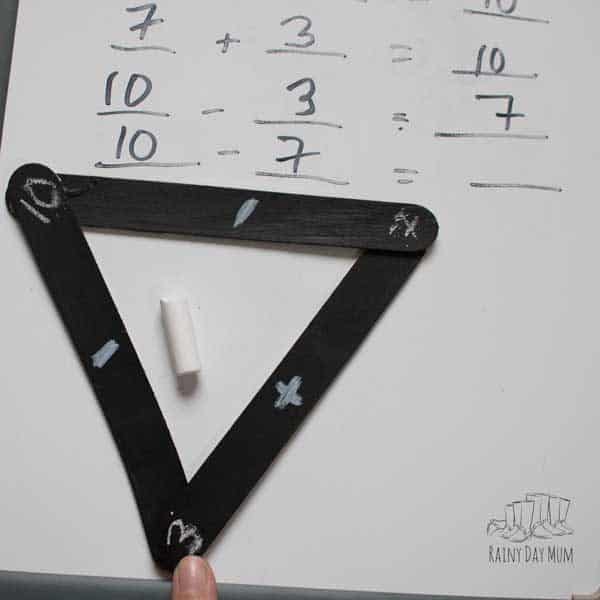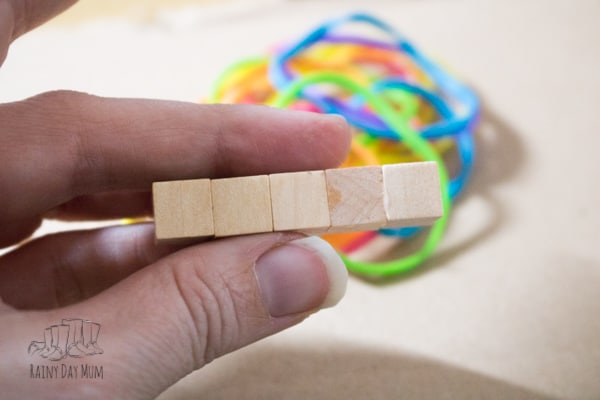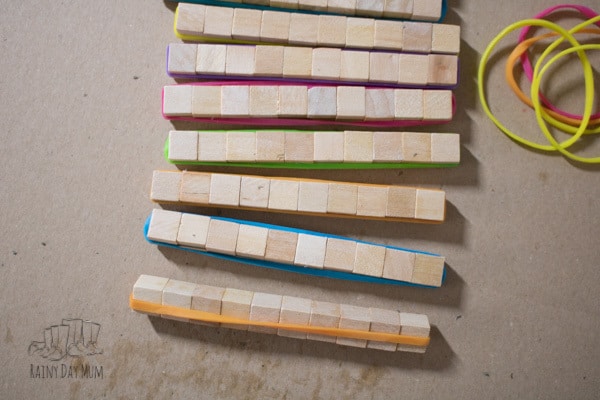DIY Base 10 Set for Maths
Whether you are homeschooling or your kids or helping with homework at some point you will come across a resource that is called Base 10 or Dienes Base 10 Sets. Throughout primary, in the UK they are used to help with place value, addition, subtraction, multiplication, and division. Most sets are made from plastic and geared towards use in schools. However, it’s really easy to make your own Place Value Base 10 Set using some wooden blocks. We’ve got full instructions on how to make your Dienes Base Ten set as well as How to Use the Base 10 Blocks with your children.

How to Make your Own Base 10 Set at Home
This is a relatively simple craft to make to create your own math manipulative. My own daughter much prefered them over the plastic blocks that she had used in school as they natural material felt “nice” in her hands as she did the maths. They also have the advantage of not being bright colours something that can help some children with learning (although feel free to paint the ones, tens and hundreds if you wish).
Materials needed to make your DIY Base 10 Set
We have included links to affiliate products that we use and recommend. If you purchase via these links we may earn a small commission.
How to Make your DIY Base 10 Counters
- Count out 20 single blocks and set aside

- For each 10 you make take a block glue one end and attach the next one.

- Continue so that you have 10 in a row.

- Now Place the elastic band around them to hold in place until the glue dries.

- Remove the elastic band and you are ready to go.
You can create 100’s as well by joining together 10 of your 10’s into a block and the same with making 1000’s in that you make a cube.

When we first started using these we only used the 10’s and 1’s but I have since made a couple of hundred blocks as well.
Using the Base 10 Counters
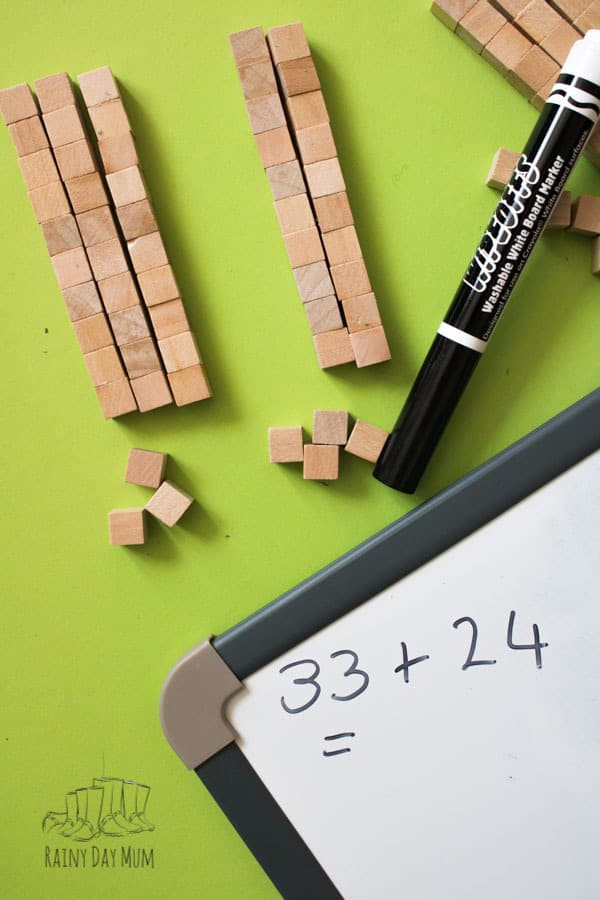
Apart from our number lines, these are probably the most used resource that I used in the classroom for number work and for homework with my own kids. The set that I had in my classroom was made of plastic so this wooden set is much more environmentally friendly and natural.
I use these sets with place value work, partitioning, addition, and subtraction as well as when we started with multiplication.
Using your 10’s and 1’s to show place value
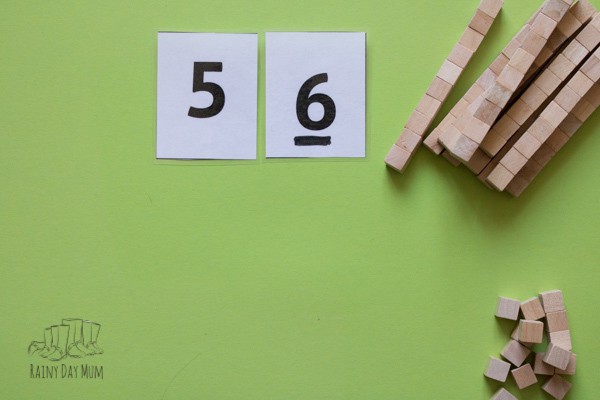
Using our basic number cards to teach place value I provided the set of 10’s counters and unit counters and then let my children show the place value. First saying the number Fifty Six and then identifying the 10’s and counting out 50 and the 1’s and counting out 6.


Using the Homemade Base 10 to Work on Partitioning
I love simple resources for working on partitioning and in the past we have used post-it notes which work really well.

With partitioning, it’s breaking the numbers down into the individual 10’s and 1’s and then using them for addition. Find instructions on how to do this on our Post-it Note Partitioning Post and instead of using the post-it’s switch out for the base 10’s or use them as well as the post-its.
Addition and Subtraction with Base 10
Probably the way that we use the set most is with addition and subtraction as they work through getting to grips with this. I find using the block set like this also helps with recognising number bonds as you can see how the blocks add up to 10 and then switch out one of the 10 sticks instead of a set of 10 blocks for that number.

With the number sentence written down take the first number and count out the number of 10’s.

Add in the units so that you have the full number of blocks for the first number.

Do the same for the second number in the number sentence.
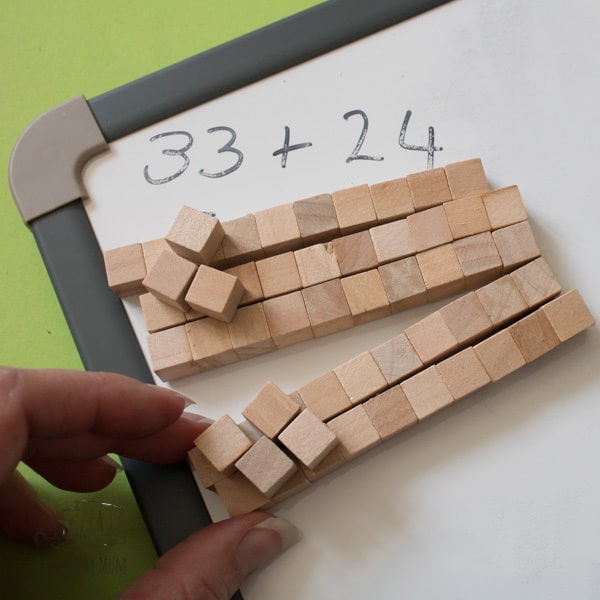
Now combine to get your total.
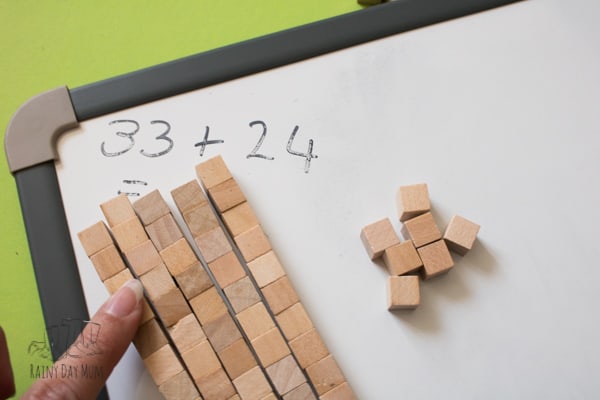
More DIY Math Resources for Homeschoolers to Make
